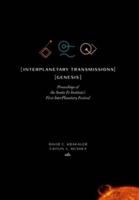Publisher's Synopsis
Radiometric sensors for aviation hazards have the potential for widespread and inexpensive deployment on aircraft. This report contains discussions of three aviation hazards - icing, turbulence, and volcanic ash - as well as candidate radiometric detection techniques for each hazard. Dual-polarization microwave radiometry is the only viable radiometric technique for detection of icing conditions, but more research will be required to assess its usefulness to the aviation community. Passive infrared techniques are being developed for detection of turbulence and volcanic ash by researchers in this country and also in Australia. Further investigation of the infrared airborne radiometric hazard detection approaches will also be required in order to develop reliable detection/discrimination techniques. This report includes a description of a commercial hyperspectral imager for investigating the infrared detection techniques for turbulence and volcanic ash.Gimmestad, Gary G. and Papanicolopoulos, Chris D. and Richards, Mark A. and Sherman, Donald L. and West, Leanne L. and Johnson, James W. (Technical Monitor)Langley Research CenterFLIGHT SAFETY; MICROWAVE RADIOMETERS; REMOTE SENSING; AIRBORNE EQUIPMENT; AIRCRAFT SAFETY; FLIGHT HAZARDS; INFRARED DETECTORS; AVIATION METEOROLOGY; ICE FORMATION; TURBULENCE; VOLCANOES; AERIAL RECONNAISSANCE; INFRARED RADIATION...












